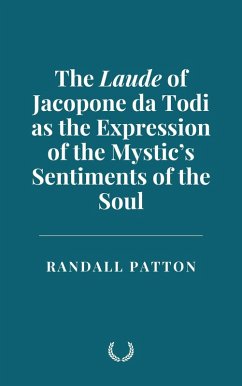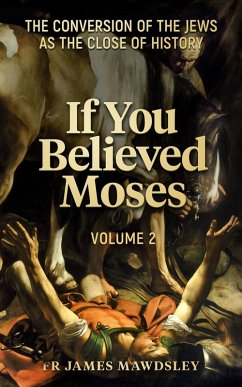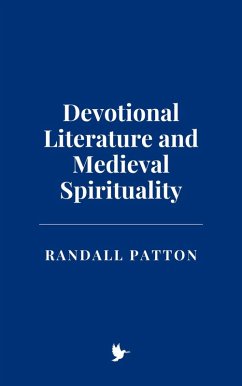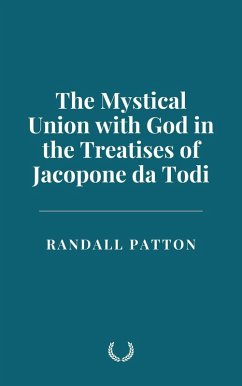
A History of Ancient and Medieval Liturgical Hymns (eBook, ePUB)

PAYBACK Punkte
0 °P sammeln!
The origins of sacred song can be traced back to the earliest human societies, where music played a central role in ritualistic and spiritual practices. Ancient civilizations such as Mesopotamia, Egypt, and the Indus Valley cultivated deeply symbolic musical traditions that were intertwined with their religious observances. Music, often accompanied by poetic recitation or chant, served as a bridge between the human and the divine, a means of invoking the gods, expressing devotion, and creating communal cohesion during sacred rites. These early liturgical expressions provide the foundation upon...
The origins of sacred song can be traced back to the earliest human societies, where music played a central role in ritualistic and spiritual practices. Ancient civilizations such as Mesopotamia, Egypt, and the Indus Valley cultivated deeply symbolic musical traditions that were intertwined with their religious observances. Music, often accompanied by poetic recitation or chant, served as a bridge between the human and the divine, a means of invoking the gods, expressing devotion, and creating communal cohesion during sacred rites. These early liturgical expressions provide the foundation upon which later traditions of hymnody were built, setting a precedent for the integration of music and worship.
By the end of the second millennium BCE, the elements of ancient hymnody-textual richness, musical complexity, and ritual function-had coalesced into a tradition that would influence subsequent generations. The hymns of these early civilizations served not only as acts of worship but also as cultural artifacts, encapsulating the philosophical, theological, and artistic achievements of their time. These sacred songs, rooted in antiquity, would echo through the ages, forming the foundation of liturgical hymnody in both ancient and medieval contexts.
Mysticism and hymnody were also closely tied to the devotional movements of the medieval period, such as the Beguines and the Franciscan mystics. These groups, often made up of laypeople who sought to live lives of religious devotion outside of the established monastic system, produced hymns and spiritual songs that emphasized the emotional and experiential aspects of the Christian life. The Beguines, for example, were part of a larger movement of female religious communities in the Low Countries and Germany that practiced a form of lay spirituality that was deeply rooted in mysticism. Their hymns, such as the Beata viscera ("Blessed Womb"), focused on the divine love of Christ and the Virgin Mary, reflecting a mystic's longing for union with the divine. These hymns often centered on themes of the Passion of Christ, emphasizing the emotional depth of Christ's suffering and the mystical union of the soul with Christ's redemptive act. One of their most famous hymns, O Maria, reflects the mystic's devotion to the Virgin Mary as a powerful intercessor: "O Mary, thou art the grace of all grace, thou art the light of the soul." Such hymns reveal how the mystical spirituality of the time was closely tied to the veneration of the Virgin Mary and the intimate connection between the devotee's soul and the divine.
By the end of the second millennium BCE, the elements of ancient hymnody-textual richness, musical complexity, and ritual function-had coalesced into a tradition that would influence subsequent generations. The hymns of these early civilizations served not only as acts of worship but also as cultural artifacts, encapsulating the philosophical, theological, and artistic achievements of their time. These sacred songs, rooted in antiquity, would echo through the ages, forming the foundation of liturgical hymnody in both ancient and medieval contexts.
Mysticism and hymnody were also closely tied to the devotional movements of the medieval period, such as the Beguines and the Franciscan mystics. These groups, often made up of laypeople who sought to live lives of religious devotion outside of the established monastic system, produced hymns and spiritual songs that emphasized the emotional and experiential aspects of the Christian life. The Beguines, for example, were part of a larger movement of female religious communities in the Low Countries and Germany that practiced a form of lay spirituality that was deeply rooted in mysticism. Their hymns, such as the Beata viscera ("Blessed Womb"), focused on the divine love of Christ and the Virgin Mary, reflecting a mystic's longing for union with the divine. These hymns often centered on themes of the Passion of Christ, emphasizing the emotional depth of Christ's suffering and the mystical union of the soul with Christ's redemptive act. One of their most famous hymns, O Maria, reflects the mystic's devotion to the Virgin Mary as a powerful intercessor: "O Mary, thou art the grace of all grace, thou art the light of the soul." Such hymns reveal how the mystical spirituality of the time was closely tied to the veneration of the Virgin Mary and the intimate connection between the devotee's soul and the divine.
Dieser Download kann aus rechtlichen Gründen nur mit Rechnungsadresse in A, B, CY, CZ, D, DK, EW, E, FIN, F, GR, H, IRL, I, LT, L, LR, M, NL, PL, P, R, S, SLO, SK ausgeliefert werden.













